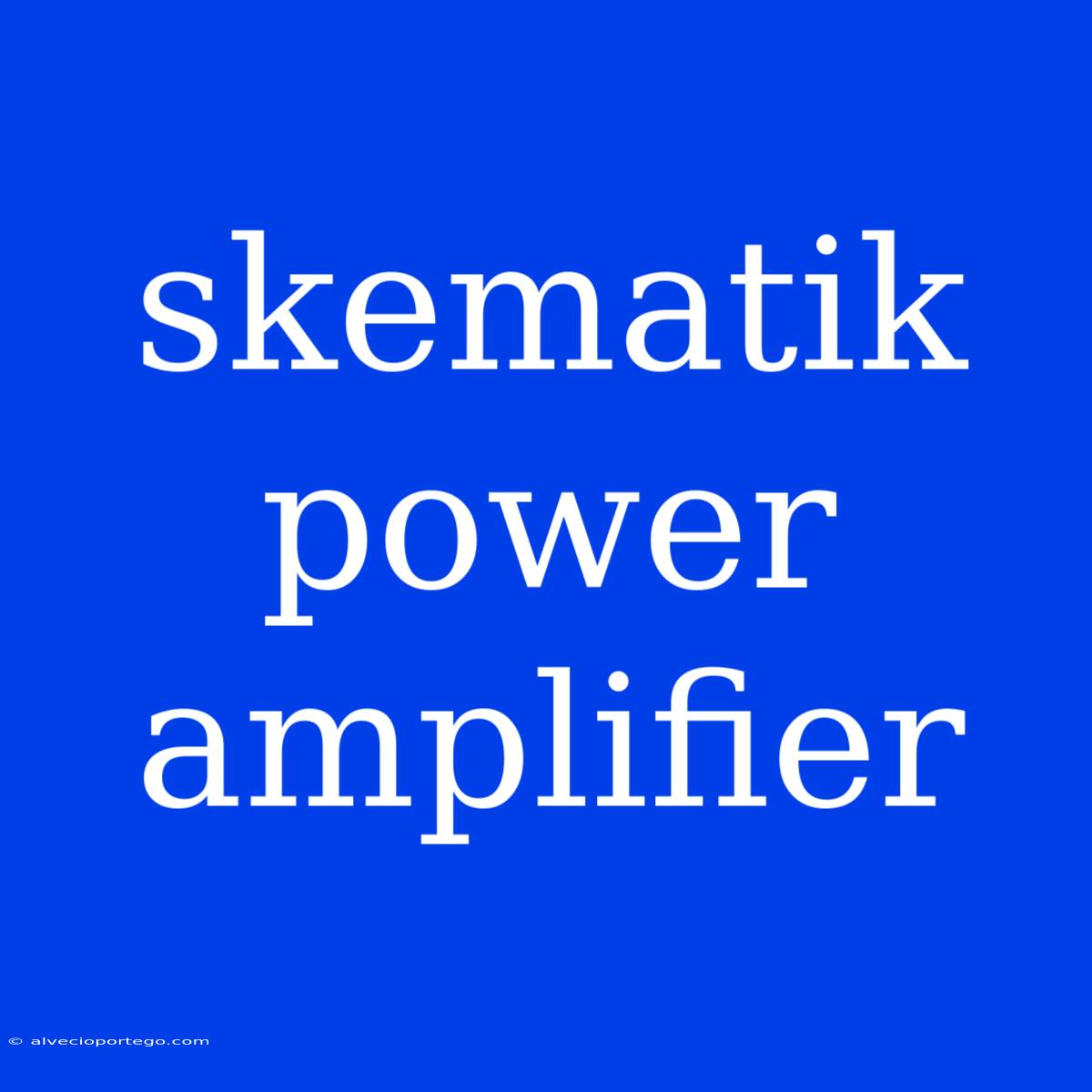Power Amplifier Schematics: A Guide to Understanding the Fundamentals
A power amplifier is a crucial component in any audio system, responsible for amplifying the weak audio signal from a preamplifier or other source into a strong signal that can drive speakers. Understanding the schematics of power amplifiers is essential for anyone interested in building or modifying audio equipment. This article provides a basic overview of power amplifier schematics, covering key components and their functions.
Types of Power Amplifier Schematics
There are various types of power amplifier schematics, each with its own advantages and disadvantages. Here are some of the most common types:
1. Class A Amplifier
- Description: Operates in the linear region of the transistor, amplifying the entire signal waveform.
- Advantages: High fidelity, low distortion.
- Disadvantages: Inefficient, high power consumption, prone to overheating.
2. Class AB Amplifier
- Description: A compromise between Class A and Class B, using a crossover network to transition between the two operating modes.
- Advantages: Improved efficiency compared to Class A, low distortion.
- Disadvantages: More complex design than Class A.
3. Class B Amplifier
- Description: Uses two transistors, each amplifying one half of the signal waveform.
- Advantages: Higher efficiency than Class A, lower cost.
- Disadvantages: Potential for crossover distortion.
4. Class D Amplifier
- Description: A switching amplifier that uses pulse-width modulation (PWM) to amplify the signal.
- Advantages: Highly efficient, small size, light weight.
- Disadvantages: Potential for high-frequency noise.
Key Components in a Power Amplifier Schematic
Here are some essential components found in most power amplifier schematics:
1. Input Stage:
- Function: Receives the low-level audio signal from the source and amplifies it to a level suitable for the driver stage.
- Typical Components: Operational amplifier (op-amp), transistors.
2. Driver Stage:
- Function: Further amplifies the signal and provides the necessary current to drive the output stage.
- Typical Components: Transistors, resistors, capacitors.
3. Output Stage:
- Function: Delivers the amplified signal to the speakers.
- Typical Components: Power transistors, heat sinks, output transformers (in some designs).
4. Feedback Network:
- Function: Used to improve stability, reduce distortion, and control the amplifier's gain.
- Typical Components: Resistors, capacitors, op-amp.
5. Power Supply:
- Function: Provides the necessary DC voltage to power the amplifier.
- Typical Components: Transformer, rectifier diodes, filter capacitors.
Understanding the Schematic
- Reading the Schematic: Start by identifying the input and output terminals. Trace the signal path through the circuit, noting the function of each component.
- Analyzing the Components: Understand the role of each component, such as transistors, capacitors, resistors, and op-amps.
- Interpreting the Circuit: Determine how the components work together to amplify the audio signal.
Resources for Learning More
There are numerous resources available for learning more about power amplifier schematics, including:
- Online Tutorials: Numerous websites offer tutorials on power amplifier theory and design.
- Books: There are many books dedicated to the topic of audio amplifier design.
- Forums: Online forums offer opportunities to ask questions and share knowledge with other enthusiasts.
By understanding the fundamentals of power amplifier schematics, you can gain valuable insights into the operation of audio systems and make informed decisions about building or modifying your own audio equipment.

